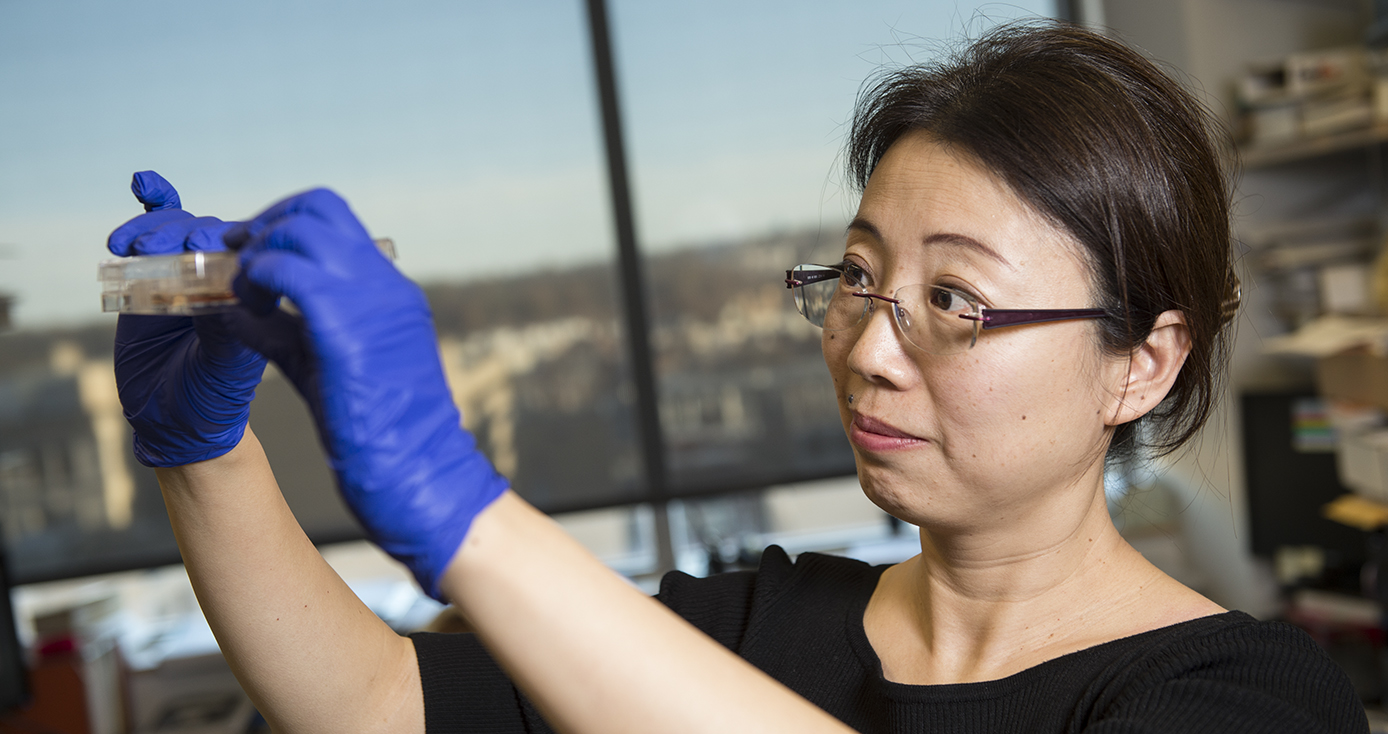
Subscribe to Pittwire Today
Get the most interesting and important stories from the University of Pittsburgh.Bioengineer Develops Brain Sensor for Investigating Drug Addiction Risks
Adults may remember the anti-drug programs they went through as grade-school students, such as DARE or Just Say No.
But not only is it important to learn about the dangers of drugs and addiction at an early age from a social standpoint; research shows there is a biological reason for starting the educational process early.
“Findings have shown that young adults — from teens to early 20s — are more susceptible to addiction to drugs like cocaine,” said Xinyan Cui, the William Kepler Whiteford Professor of Bioengineering at the University of Pittsburgh Swanson School of Engineering. “The fundamental mechanism of that, however, is unknown.”
Understanding that biological origin requires a way to effectively measure how cocaine interacts with different parts of the brain over time, and Pitt researchers have recently created a sensor that aims to do just that.
Pitt bioengineers, including Cui, have developed a new method of using synthetic DNA called aptamers to view the effect of cocaine on the brain in real time with a much higher resolution than other techniques.
“Aptamer-based cocaine sensors have been previously developed for detecting cocaine in whole blood samples, outside of the body. We are the first to develop a sensor for detecting cocaine in the brain tissue of live animals,” said Cui.
She and her team will be using the aptamer-based sensors to observe and record the effects of cocaine use on both adolescent and adult rats in a two-year study.
Researchers hope to answer the question of whether the age effect is the result of differences in neuron sensitivity to cocaine or whether it might be a consequence of how cocaine concentrates in different areas of the brain.
Past studies have shown that the brain’s biological environment can interfere with the sensors’ ability to relay information to the researchers, limiting their ability to function well to just a couple hours, so Cui and her team will be looking into how to better protect the sensors as well.
“We are designing biocompatible polymer coatings to make the sensor unrecognizable by the immune system, so we can have a better interface between the sensor and the brain tissue,” said Cui.
With this new innovation, the sensors would be able to work for a period of days, ideal for the research because Cui aims to directly measure real-time cocaine concentration in different locations of the brain for at least 72 hours.
Conventional methods of measuring cocaine in the brain tissue are only able to measure concentration levels every five to 10 minutes and over a large area of the brain.
The technology platform the sensors are based on can also be used to measure other substances, like alcohol or opioids.
“We hope to provide previously unattainable information to researchers studying addiction and provide real-time monitoring of cocaine concentrations on regions of the brain so that they may understand how addiction works,” Cui said.
Cui’s previous work on aptamers and cocaine detection was published in The Royal Society of Chemistry’s Journal of Materials Chemistry B in 2017.


